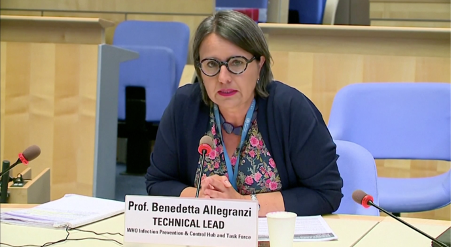Yesterday, the World Health Organization acknowledged new emerging evidence that the novel coronavirus does spread more widely in the air than previously suggested. Airborne transmission cannot be ruled out in crowded, closed or poorly ventilated areas.
Speaking in Geneva this Tuesday, Benedetta Allegranzi, technical lead for infection prevention and control, accepted that there was evidence emerging of airborne transmission for coronavirus. However, she reinforced that nothing was definitive.
‘The possibility of airborne transmission in public settings – especially in very specific conditions, crowded, closed, poorly ventilated settings that have been described, cannot be ruled out,’ she said.
This comes after an open letter of over 200 scientists across the world highlighted that WHO underestimated the risk of airborne transmission. They urged the global body to update guidance on how the respiratory virus spreads.
‘We wanted them to acknowledge the evidence,’ said Jose Jimeneze, chemist at the University of Colorado, who signed the paper. ‘This is definitely not an attack on the WHO, it’s a scientific debate because they were refusing to hear the evidence after many conversations.’
Scientists have highlighted a wider refusal to accept the notion of aerosol transmission. Jimenez suggested that this proof is disproportionally more scrutinised because of the fear of panic. ‘If people hear airborne, healthcare workers will refuse to go to the hospital,’ he said.
A US study at Harvard TH Chan School for Public Health’s found an 8% higher mortality rate of coronavirus in areas with higher air pollution. In these areas, the virus can travel further, attaching itself to fine particulate air pollution, largely generated from fuel combustion produced by cars, refineries and power plants.
What is clear, is that air health has never been more important. The WCRAQ propose to implement more reliable clean air solutions by creating a road map of pollution from air quality monitoring equipment attached to all refuse collection vehicles. Click here to find out more.




